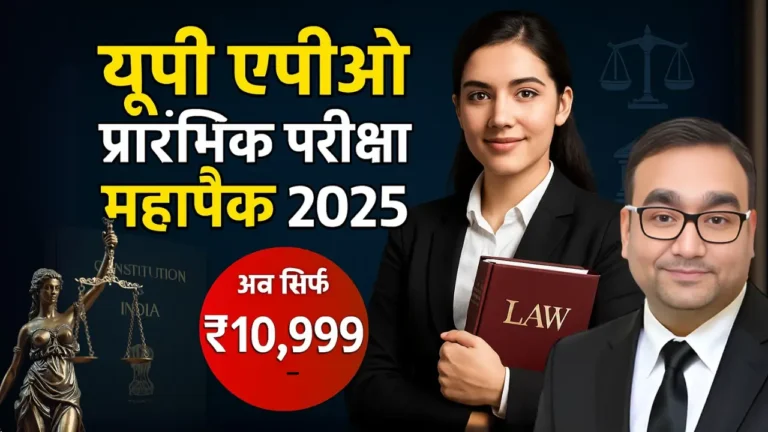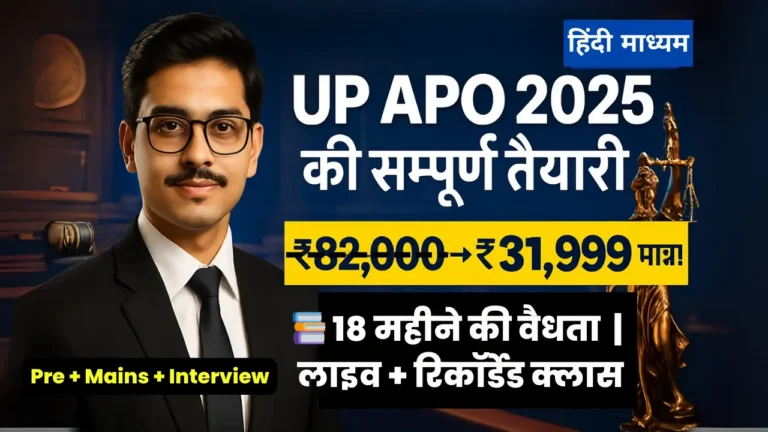What does the Teen Bigha Corridor Case reveal about India’s Constitution? Doon Law Mentor analyzes Union of India v. Sukumar Sengupta (1990), exploring sovereignty, cession, and Article 3. Essential for law students studying constitutional law.
Table of Contents
Introduction
Can a nation grant access to its territory without surrendering sovereignty? The Teen Bigha Corridor Case (Union of India v. Sukumar Sengupta, 1990 Supp SCC 545) answers this question, offering profound insights into India’s constitutional framework and international law. This landmark Supreme Court ruling addressed the contentious issue of the Teen Bigha Corridor, a small strip of Indian land leased to Bangladesh, raising questions about territorial cession and constitutional amendments. For lawyers and law students, understanding the Teen Bigha Corridor Case is essential for mastering concepts of sovereignty, Article 3, and executive powers under the Indian Constitution. This educational article, crafted by Doon Law Mentor, provides a comprehensive legal analysis of the Teen Bigha Corridor Case , exploring its facts, legal issues, judicial reasoning, constitutional implications, and relevance for UPSC and judiciary exams.
Background of the Teen Bigha Corridor Case
The Teen Bigha Corridor Case originated from historical boundary disputes following India’s partition in 1947 under the Indian Independence Act, 1947. The Radcliffe Award, which demarcated boundaries between India and Pakistan, left several enclaves—territories of one nation surrounded by another—in both countries. The Teen Bigha Corridor, a 2.4-hectare strip in West Bengal, was critical as it provided access between Bangladesh’s Dahagram and Angarpota enclaves and its mainland. These enclaves were Pakistani territories post-partition, later becoming part of Bangladesh after its independence in 1971.
The Teen Bigha Corridor Case was shaped by a series of agreements:
- 1958 Nehru-Noon Agreement: Proposed exchanging enclaves, including transferring Berubari Union No. 12 to Pakistan and Dahagram and Angarpota to India.
- Constitution (Ninth Amendment) Act, 1960: Enacted to implement the 1958 agreement by amending the First Schedule, but it remained ineffective without an “appointed day” notification.
- 1974 and 1982 Indo-Bangladesh Agreements: Modified the earlier plan, allowing Bangladesh to retain Dahagram and Angarpota. India granted Bangladesh a “lease in perpetuity” over the Teen Bigha Corridor for access, while retaining sovereignty.
The Teen Bigha Corridor Case arose when Sukumar Sengupta and others challenged the 1974 and 1982 agreements, arguing that leasing Teen Bigha constituted cession of Indian territory, requiring a constitutional amendment under Articles 3 and 368. The Calcutta High Court partially upheld this, prompting the Union of India’s appeal to the Supreme Court.
Facts of the Teen Bigha Corridor Case
- Geopolitical Context: Post-partition, Dahagram and Angarpota were Pakistani enclaves within India, accessible only through the Teen Bigha Corridor in West Bengal’s Cooch Behar district. Berubari Union No. 12, an Indian enclave, was also disputed.
- Agreements:
- The 1958 agreement aimed to exchange enclaves but was not implemented for eastern India.
- The 1974 agreement, post-Bangladesh’s independence, allowed Bangladesh to retain Dahagram and Angarpota, with India granting a perpetual lease over Teen Bigha for access.
- The 1982 agreement clarified that Bangladesh would have uninterrupted use of Teen Bigha, but India retained sovereignty.
- Legal Challenge: Petitioners argued that the lease constituted cession, violating Articles 1 and 3, as the Teen Bigha Corridor Case involved Indian territory. They claimed it required parliamentary legislation and constitutional amendment.
- High Court Ruling: The Calcutta High Court (1986) held that implementing the agreements required constitutional amendments and amendments to the Indian Penal Code and Criminal Procedure Code to address jurisdictional issues in Teen Bigha.
The Teen Bigha Corridor Case thus centered on whether the lease amounted to cession and whether executive action alone was sufficient.
Read More: Decoding the Right to Equality for Women Officers in India’s Defense Forces
Legal Issues in the Teen Bigha Corridor Case
The Teen Bigha Corridor Case raised critical legal questions:
- Did the 1974 and 1982 agreements involve cession of Indian territory, necessitating a constitutional amendment under Articles 3 and 368?
- Did the “lease in perpetuity” of Teen Bigha to Bangladesh constitute a surrender of sovereignty or an international servitude?
- Could the agreements be implemented through executive action, or was parliamentary legislation required?
- Did the non-implementation of the Ninth Amendment (1960) affect the territorial status of Dahagram, Angarpota, and Teen Bigha?
These issues made the Teen Bigha Corridor Case a landmark in constitutional and international law.
Supreme Court’s Reasoning in the Teen Bigha Corridor Case
In Union of India v. Sukumar Sengupta (1990), a Constitution Bench led by Chief Justice Sabyasachi Mukharji delivered a unanimous judgment, reversing parts of the Calcutta High Court’s decision. The Court’s reasoning in the Teen Bigha Corridor Case was grounded in constitutional and international law principles:
- No Cession of Territory:
- The Court held that the Teen Bigha Corridor Case did not involve cession, defined in international law as the physical transfer of territory with full sovereignty to another nation.
- The 1974 and 1982 agreements granted Bangladesh restricted rights of passage over Teen Bigha, while India retained sovereignty, ownership, and control. This was a servitude, not a transfer of sovereignty.
- The Court noted that Dahagram and Angarpota remained de jure and de facto part of East Pakistan (later Bangladesh), as the Ninth Amendment was never enforced due to the absence of an “appointed day” notification.
- No Constitutional Amendment Required:
- Articles 3 and 368 require amendments for altering state boundaries or ceding territory. Since Teen Bigha remained Indian territory, no amendment was needed.
- The Court distinguished the Teen Bigha Corridor Case from In Re: Berubari Union (1960), where cession of undisputed Indian territory (Berubari) required amendment. In contrast, Teen Bigha’s lease did not alter India’s First Schedule.
- Executive Action Sufficient:
- The Teen Bigha Corridor Case clarified that agreements not involving cession could be implemented through executive action, as per Article 73 (Union’s executive power). No parliamentary law was required.
- The Court rejected the High Court’s directive to amend the Constitution or enact legislation, as the agreements were valid under international law.
- Jurisdictional Concerns:
- The Court acknowledged that Bangladesh nationals committing offenses in Teen Bigha would be subject to Bangladesh’s laws, necessitating adjustments in India’s legal framework (e.g., Indian Penal Code, now Bharatiya Nyaya Sanhita, 2023 (BNS)). However, this did not require immediate legislative changes, as executive arrangements sufficed.
- International Law Context:
- Citing D.P. O’Connell’s International Law, the Court clarified that a “lease in perpetuity” between sovereign states does not equate to a private law lease or surrender of sovereignty. It constituted an international servitude, allowing Bangladesh limited rights without affecting India’s sovereignty.
The Teen Bigha Corridor Case thus affirmed that the agreements were constitutionally valid, requiring no amendment or legislation.
Read More: Kelsen’s Grundnorm in India: A Legal Philosophy Analysis for 2025
Constitutional Insights from the Teen Bigha Corridor Case
The Teen Bigha Corridor Case offers critical insights into the Indian Constitution:
- Article 1 and Territorial Integrity: Article 1 defines India as a Union of States, with territories specified in the First Schedule. The Teen Bigha Corridor Case clarified that arrangements not altering this schedule do not require constitutional amendments.
- Article 3 and Boundary Adjustments: Article 3 empowers Parliament to alter state boundaries or names. The Teen Bigha Corridor Case distinguished boundary adjustments (servitudes) from cession, limiting Article 3’s application.
- Article 368 and Amendments: The Court reinforced that only cession of sovereignty triggers Article 368, as seen in Berubari Union (1960), but not in the Teen Bigha Corridor Case.
- Article 73 and Executive Power: The Teen Bigha Corridor Case underscored the Union’s executive power to implement international agreements, provided they do not cede territory.
- Judicial Review: The Court’s role in interpreting international agreements vis-à-vis constitutional provisions highlights judicial review’s importance in safeguarding sovereignty, a principle also seen in L. Chandra Kumar v. Union of India (1997).
Impact of the Teen Bigha Corridor Case
The Teen Bigha Corridor Case had significant implications:
- Sovereignty Clarified: It established that granting limited rights (servitudes) does not equate to cession, preserving India’s territorial integrity.
- Executive Authority Strengthened: The ruling affirmed the Union’s power to execute international agreements without parliamentary approval in non-cession cases.
- India-Bangladesh Relations: The Teen Bigha Corridor Case facilitated diplomatic resolution of enclave disputes, culminating in the 2015 Land Boundary Agreement, which exchanged 162 enclaves, resolving issues left open in 1990.
- Legal Precedent: The case set a precedent for distinguishing cession from servitudes, influencing cases like In Re: Article 370 (2023).
Contemporary Relevance
As of July 16, 2025, the Teen Bigha Corridor Case remains relevant:
- BNS and BNSS: The Bharatiya Nyaya Sanhita, 2023 (BNS) and Bharatiya Nagarik Suraksha Sanhita, 2023 (BNSS) govern offenses in Indian territory. The Teen Bigha Corridor Case’s jurisdictional findings suggest that executive agreements can adapt these laws for areas like Teen Bigha, where Bangladesh exercises limited jurisdiction.
- Border Disputes: With ongoing India-Bangladesh border cooperation, the Teen Bigha Corridor Case provides a framework for resolving similar disputes without constitutional amendments.
- Federalism: The case reinforces the Union’s authority over international agreements, balancing federalism with national interests, as seen in S.R. Bommai v. Union of India (1994).
- UPSC and Judiciary Exams: The Teen Bigha Corridor Case is a staple in constitutional law syllabi, testing knowledge of Articles 1, 3, 73, and 368.
Challenges and Criticisms
The Teen Bigha Corridor Case faced criticisms:
- Local Resistance: Residents of Teen Bigha opposed the lease, fearing loss of access and rights, as raised in the Calcutta High Court.
- Jurisdictional Ambiguity: The Court’s allowance of Bangladesh’s law enforcement in Teen Bigha raised concerns about India’s practical control, necessitating clearer legal frameworks.
- Executive Overreach: Critics argued that bypassing Parliament undermined democratic accountability, a debate echoed in A.K. Roy v. Union of India (1982).
- Judicial Legislation: Some view the Court’s validation of executive action as judicial overreach, aligning with discussions in A Comprehensive Analysis on Judicial Legislation in India (2022).
Role of Legal Professionals
Lawyers and law students can leverage the Teen Bigha Corridor Case to:
- Advocate for Clarity: Push for legislative clarity on jurisdictional issues in international servitudes.
- Public Awareness: Educate communities about the Teen Bigha Corridor Case to dispel myths about territorial loss.
- Judicial Review: Support courts in reviewing executive actions in international agreements, ensuring constitutional compliance.
- Exam Preparation: Use the case to master Articles 1, 3, and 368 for UPSC and judiciary exams.
Table: Key Aspects of the Teen Bigha Corridor Case
| Aspect | Details | Constitutional Basis | Impact |
|---|---|---|---|
| Issue | Lease of Teen Bigha to Bangladesh | Articles 1, 3, 368 | No cession, no amendment needed |
| Ruling | No cession; executive action valid | Article 73 | Strengthened executive power |
| Precedent | Distinguished from Berubari Union | Article 368 | Clarified servitude vs. cession |
| Outcome | Sovereignty retained by India | International law | Improved India-Bangladesh ties |
This table, by Doon Law Mentor, summarizes the Teen Bigha Corridor Case.
Conclusion: A Constitutional Milestone
The Teen Bigha Corridor Case (Union of India v. Sukumar Sengupta, 1990) is a landmark in Indian constitutional law, clarifying that granting a “lease in perpetuity” does not constitute cession, thus requiring no constitutional amendment. By upholding executive action under Article 73, the Supreme Court balanced sovereignty with diplomatic needs, setting a precedent for international agreements. The Teen Bigha Corridor Case underscores the judiciary’s role in safeguarding constitutional integrity while fostering India-Bangladesh relations. Legal professionals must study this case to understand territorial sovereignty and executive powers. Visit Doon Law Mentor at doonlawmentor.com for more constitutional insights!
Key Takeaways:
- The Teen Bigha Corridor Case held that leasing Teen Bigha was not cession, requiring no amendment under Articles 3 or 368.
- Executive action under Article 73 was sufficient, reinforcing Union authority.
- The case distinguished servitudes from cession, citing international law.
- It remains relevant for border disputes and exam preparation.
- The BNS and BNSS support jurisdictional adaptations in such cases.
FAQs
What is the Teen Bigha Corridor Case?
The Teen Bigha Corridor Case (1990) addressed whether leasing Teen Bigha to Bangladesh was cession, ruling it a servitude not requiring constitutional amendment.
Did the Teen Bigha Corridor Case involve cession?
No, the Supreme Court held that the lease was a servitude, not cession, preserving India’s sovereignty.
Why was no constitutional amendment needed?
The Teen Bigha Corridor Case did not alter India’s territory, making executive action under Article 73 sufficient.
How does the case impact India-Bangladesh relations?
The Teen Bigha Corridor Case facilitated diplomatic resolutions, leading to the 2015 Land Boundary Agreement.
Why study the Teen Bigha Corridor Case?
It’s essential for understanding Articles 1, 3, 73, and 368, and is key for UPSC and judiciary exams.
#TeenBighaCorridorCase #IndianConstitution #ConstitutionalLaw #DoonLawMentor






